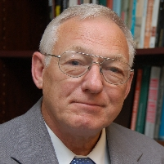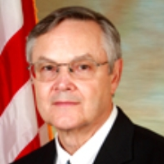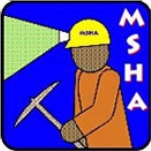The Mine Safety and Health Administration (MSHA) is the Department of Labor’s lead agency for protecting workers in the American mining industry. With a jurisdiction covering 12,700 metal and nonmetal mines and 2,100 coal mines, MSHA is charged with enforcing safety regulations that are designed to eliminate work-related accidents and health hazards. Despite its mandate to protect mine workers, MSHA has compromised mine safety as a result of its actions during the administration of President George W. Bush, which has appointed agency leaders from the ranks of mining companies.
Congress passed the first coal mine safety law in 1891. The legislation established minimum ventilation requirements at underground coal mines in US territories and prohibited children under 12 years of age from working in mines. The law did little to reduce the occurrence of mine accidents, which caused 2,000 deaths a year during the early 20th century.
Part of the Department of Labor, the Mine Safety and Health Administration (MSHA) is responsible for helping protect employees who work in mines across the United States. MSHA enforces safety regulations for mining sites, and attempts to eliminate work-related accidents and health hazards. The agency also conducts education and training designed to improve safety conditions for miners. MSHA has jurisdiction over an estimated 12,700 metal and nonmetal mines and 2,100 coal mines nationwide.
The Mine Safety and Heath Administration has spent more than $200 million on 1,686 contractors this decade. According to USAspending.gov, MSHA paid for a variety of services, from programming to telecommunications, in support of its mission. Oddly, of the top 10 contractors MSHA paid, No. 4 on the list is the federal government, consisting of the Health Resources and Services Administration, Federal Prison Industries Inc., Veterans Health Administration, GSA Heartland Finance Center and General Services. The complete top 10 are as follows:
- Envision Technology Partners $18,594,153
- Basic Contracting Services $9,890,757
- Client Network Services (CNSI) $8,390.014
- US Government $7,708,800
- Mine Safety Appliances $7,421,086
- Advanced Resource Technologies $7,150,211
- Wheeling Jesuit University $5,859.298
- AES Group $4,990,753
- Eyak Corporation $4,307,478
- American Electric Power $3,744,142
Inspector General Blasts MSHA for Utah Disaster
Dave D. Lauriski 2001 to 2004
- Table of Contents
- Overview
- History
- What it Does
- Where Does the Money Go
- Controversies
- Suggested Reforms
- Comments
- Leave a comment

A career union official and mine safety expert, Joseph A. (Joe) Main’s selection as Assistant Secretary for Mine Safety and Health in the Department of Labor represents a dramatic turnaround for the leadership of the Mine Safety and Health Administration, which favored the coal and other mining industries during the Bush administration, even after several high-profile mine disasters killed dozens of workers. Main was confirmed by the Senate on October 21, 2009.

A native of West Virginia, Richard E. Stickler served as the assistant secretary of labor for mine safety and health beginning in October 2006. After the Senate rejected his nomination by President Bush, Stickler was given a recess appointment which expired in December 2007. In January 2008, President Bush re-nominated Stickler, this time as acting assistant secretary.
- Latest News
- D.C. Public Schools will Teach all Second-Graders to Ride a Bike
- New Rule in Germany Limits Sales of Sex-Themed E-Books to 10pm to 6am
- What Happened to the 6-Year-Old Tibetan Boy the Chinese Government Kidnapped 20 Years Ago?
- U.S. Ambassador to Turkey Photoshops his Hair Color to Mock Turkish Mayor
- Mystery Artist Calls Attention to Unfixed Potholes by Drawing Penises around Them
The Mine Safety and Health Administration (MSHA) is the Department of Labor’s lead agency for protecting workers in the American mining industry. With a jurisdiction covering 12,700 metal and nonmetal mines and 2,100 coal mines, MSHA is charged with enforcing safety regulations that are designed to eliminate work-related accidents and health hazards. Despite its mandate to protect mine workers, MSHA has compromised mine safety as a result of its actions during the administration of President George W. Bush, which has appointed agency leaders from the ranks of mining companies.
Congress passed the first coal mine safety law in 1891. The legislation established minimum ventilation requirements at underground coal mines in US territories and prohibited children under 12 years of age from working in mines. The law did little to reduce the occurrence of mine accidents, which caused 2,000 deaths a year during the early 20th century.
Part of the Department of Labor, the Mine Safety and Health Administration (MSHA) is responsible for helping protect employees who work in mines across the United States. MSHA enforces safety regulations for mining sites, and attempts to eliminate work-related accidents and health hazards. The agency also conducts education and training designed to improve safety conditions for miners. MSHA has jurisdiction over an estimated 12,700 metal and nonmetal mines and 2,100 coal mines nationwide.
The Mine Safety and Heath Administration has spent more than $200 million on 1,686 contractors this decade. According to USAspending.gov, MSHA paid for a variety of services, from programming to telecommunications, in support of its mission. Oddly, of the top 10 contractors MSHA paid, No. 4 on the list is the federal government, consisting of the Health Resources and Services Administration, Federal Prison Industries Inc., Veterans Health Administration, GSA Heartland Finance Center and General Services. The complete top 10 are as follows:
- Envision Technology Partners $18,594,153
- Basic Contracting Services $9,890,757
- Client Network Services (CNSI) $8,390.014
- US Government $7,708,800
- Mine Safety Appliances $7,421,086
- Advanced Resource Technologies $7,150,211
- Wheeling Jesuit University $5,859.298
- AES Group $4,990,753
- Eyak Corporation $4,307,478
- American Electric Power $3,744,142
Inspector General Blasts MSHA for Utah Disaster
Dave D. Lauriski 2001 to 2004
Comments

A career union official and mine safety expert, Joseph A. (Joe) Main’s selection as Assistant Secretary for Mine Safety and Health in the Department of Labor represents a dramatic turnaround for the leadership of the Mine Safety and Health Administration, which favored the coal and other mining industries during the Bush administration, even after several high-profile mine disasters killed dozens of workers. Main was confirmed by the Senate on October 21, 2009.

A native of West Virginia, Richard E. Stickler served as the assistant secretary of labor for mine safety and health beginning in October 2006. After the Senate rejected his nomination by President Bush, Stickler was given a recess appointment which expired in December 2007. In January 2008, President Bush re-nominated Stickler, this time as acting assistant secretary.
- Latest News
- D.C. Public Schools will Teach all Second-Graders to Ride a Bike
- New Rule in Germany Limits Sales of Sex-Themed E-Books to 10pm to 6am
- What Happened to the 6-Year-Old Tibetan Boy the Chinese Government Kidnapped 20 Years Ago?
- U.S. Ambassador to Turkey Photoshops his Hair Color to Mock Turkish Mayor
- Mystery Artist Calls Attention to Unfixed Potholes by Drawing Penises around Them






Comments